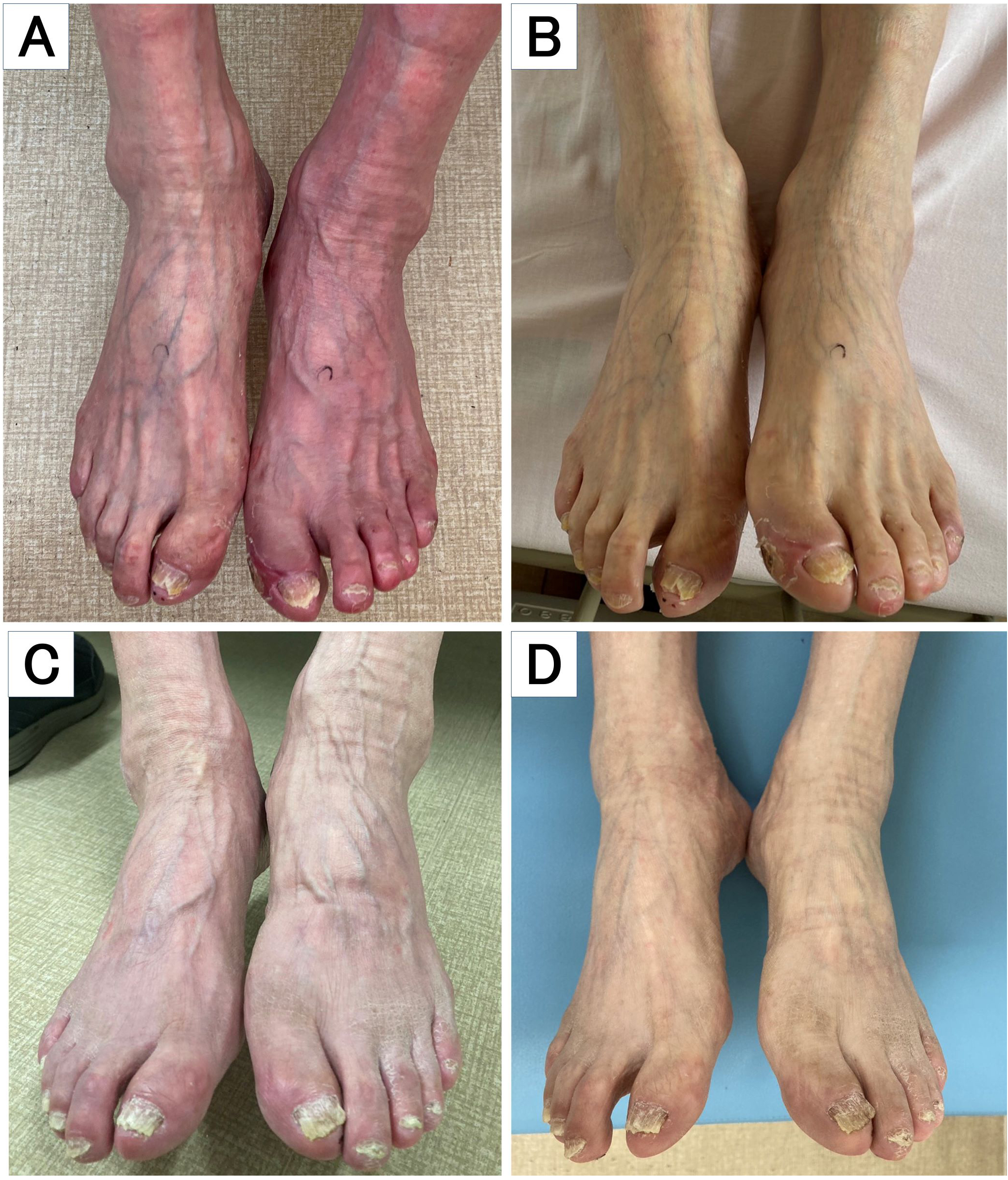Corresponding author: Hiroki Kojima, hirokikojima1863@gmail.com
DOI: 10.31662/jmaj.2024-0237
Received: August 21, 2024
Accepted: October 7, 2024
Advance Publication: November 25, 2024
Published: January 15, 2025
Cite this article as:
Hirokawa K, Kojima H, Hiraoka E. Resolution of Dependent Rubor after Revascularization for Peripheral Artery Disease. JMA J. 2025;8(1):300-301.
Key words: peripheral artery disease, dependent rubor, dependent erythema
An 80-year-old man with hypertension, type 2 diabetes, and a 40 pack-year history of smoking presented with six months of coldness and exercise-induced pain in his left foot. In the dependent position, 5 seconds after sitting with the legs lowered, erythema was evident on the left foot (Figure 1A). In the supine position, the erythema quickly subsided (Figure 1B). This erythematous discoloration phenomenon is called dependent rubor and is a pathognomonic finding of advanced peripheral artery disease (PAD) (1). The left ankle-brachial index (ABI) was unmeasurable. Angiography revealed total occlusion of the left superficial femoral artery. Revascularization with endovascular treatment was performed. Postoperatively, the leg pain significantly improved, and the ABI improved to 0.96. One month later, the dependent rubor resolved (Figure 1C and 1D). To the best of our knowledge, the present report is the first to describe the resolution of dependent rubor after revascularization; it may indicate successful therapeutic intervention for PAD.

None
Kazuhiko Hirokawa: Conceptualization, Writing-original draft, Investigation
Hiroki Kojima: Writing-review & editing, Investigation
Eiji Hiraoka: Writing-review & editing
This report did not require IRB approval.
Written informed consent was obtained from the patient.
Kozol RA, Bredenberg CE, Fey JD, et al. Dependent rubor as a predictor of limb risk in patients with claudication. Arch Surg. 1984;119(8):932-5.